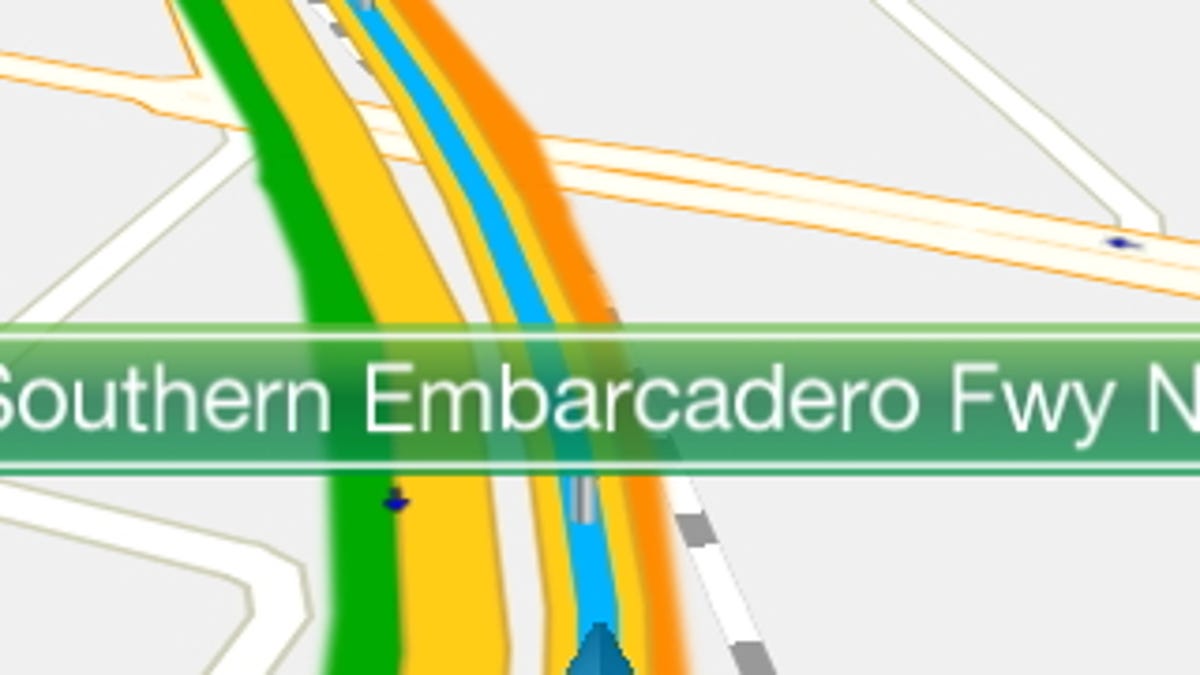Scout navigation app: Basic route guidance for free
The Scout navigation app for iPhone works decently, if quietly, but becomes much, much more usable with a paid upgrade.

In light of Apple's recent announcements about its Maps app, the idea of another navigation app for the iPhone might seem redundant, but Apple's program will have a hard time matching the route guidance capabilities of Telenav's Scout.
This recently released free navigation app builds on Telenav's extensive experience in mobile navigation. Telenav came up with a new interface design and made the app free as a way of competing in the increasingly cutthroat world of navigation software.
Scout's major drawbacks are that it is strictly an online app, and voice prompts require a $9.99-a-year subscription. I also found some aspects of the interface a little bit subtle, making it not always apparent how to find certain features and begin navigation.
Most people won't have a problem with Scout's online requirement, as the majority of navigating is done in places with a data connection. When I drove into an area with no cell reception, Scout's maps disappeared, although it did still show a line indicating my direction on the screen. Unlike some other navigation apps, Scout can't preload maps for a route.
The main interface combines a small map, a search box, points of interest, and buttons for home and work addresses. These buttons automatically compute the drive time for the home and work addresses saved in the app, showing these times right on the main interface. This feature can be particularly useful for people who want to determine the best time to head for work or home, as the drive times will take traffic into account if the app includes the voice guidance annual subscription.
When I first started using Scout, I did not notice any favorites or recent destinations list, and found myself looking up addresses repeatedly with the search box. Poking around the interface, I finally found that touching the Drive button took me to a screen with a recent destination list, a link to my phone's contacts, and similar saved addresses.
Similarly, after finding a destination with search, Scout brings up a nice little card for the place that includes the address, phone number, crowdsourced reviews, and a button to share the location through e-mail or text messaging. But there is no button that says "Navigate" or "Set this address as a destination." Instead, I had to touch the address on the screen, which caused Scout to calculate routes.
Scout offered three routes for each destination I chose, then required me to pick one of them and push the navigate button to begin route guidance. It seemed like a lot of steps to go through to begin navigation, but it was nice to have the multiple routes shown right from the start.
Without the voice prompt upgrade, Scout is a purely visual navigator, and does not take traffic into account. But it worked very well as long as I could clip the phone somewhere in the car where I could see it. Its turn instructions were easy to follow and shown well in advance of upcoming turns. It also shows maps in 2D or 3D views, at the driver's preference.
Adding the voice guidance subscription, Scout became much more useful. In fact, I found that I began to rely on it for most navigation, even if I already knew my route. With the upgrade, it does an excellent job of integrating traffic. Frequently I would start out on a trip, and Scout would announce that it adjusted the route based on a traffic problem up ahead. It is quite satisfying to go cruising down a clear road, imagining that somewhere nearby is a massive jam-up.
The voice prompts made it unnecessary to put my phone up on the dashboard, as they included the names of the streets on which I would be turning. These voice prompts also talked through multiple, close-together turns before I reached them, giving some advanced preparation. I was also able to turn off my iPhone's screen, saving its battery, and still hear the voice prompts.
On arriving at a destination, Scout does not automatically end its route guidance, which would be nice. Instead, I had to either touch the end-trip button, which kind of disappears in the lower right-hand corner of the route guidance screen, or shut down the app. Unlike some other navigation apps, Scout doesn't automatically resume a route when it is shut down and then restarted.
One other feature that might keep Scout relevant once Apple's maps app becomes generally available is its integration with the Scout.me Web site and in-car infotainment systems. The Web site is supposed to let users select destinations on their PCs and share them with the phone app. That would be useful when, for example, getting an e-mail with a physical address and pasting it into the Web site. However, the Web site is still in beta, and never linked up with my phone.
The other component of the Scout ecosystem, integration with cars, will have to wait until automakers implement the compatible software. Telenav has a strong working relationship with Ford, so I would expect it would be the first automaker to incorporate Scout. With full implementation, drivers should be able to find a destination using the phone app or Web site, and send it to the car's navigation system.
Scout is available for the iPhone as a free download. Voice prompts, with traffic routing, can be added for a price of $9.99 per year. Click here to download Scout.

